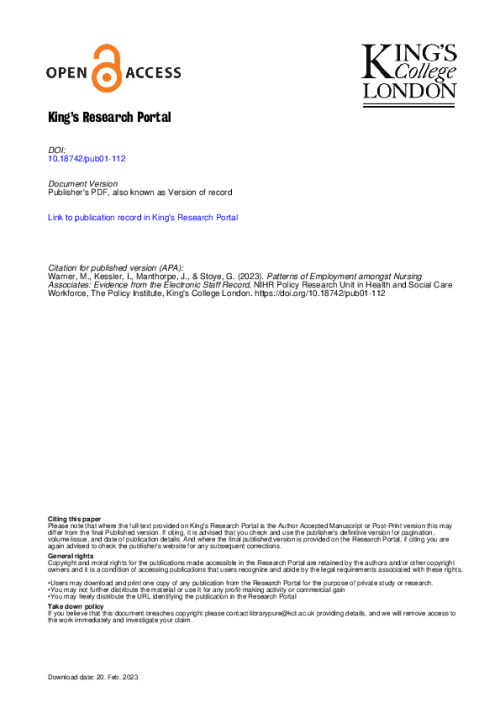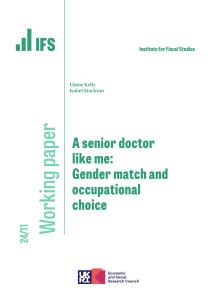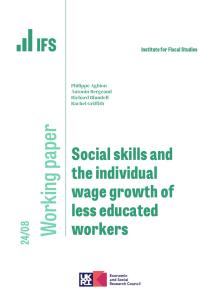Since early 2019 the NIHR Policy Research Unit in Health and Social Care Workforce has been evaluating the introduction of the nursing associate role in health and social care, using a range of methods, including surveys of Chief Nurses, Trainee Nursing Associates (TNAs) and Nursing Associates (NAs), and in-depth interviews with policy makers and practitioners (see for example, Kessler et al., 2020, Kessler et al., 2021a and b, and Kessler et al., 2022). This report adds to the work by drawing upon the Electronic Staff Record (ESR), the monthly payroll of all staff directly employed by NHS Trusts, to describe the personal and employment characteristics of all TNAs and NAs (henceforth T/NAs) employed by NHS Trusts in England over time and how they compare to other staff groups.
More specifically, we undertook three pieces of analysis using the ESR. First, we considered the demographic characteristics of T/NAs, and compared them to the demographic characteristics of nurses and health care assistants (HCAs). Second, given that the NA programme was a national initiative we examined regional and Trust patterns in the take-up of the role. Third, we followed cohorts of T/NAs over time, tracking whether T/NAs previously worked in the NHS, movements between Trusts and whether they stayed in the NHS over time. The ESR enables us to follow movements between different staff groups over time, to track progression between TNAs and NAs, as well as the progression from NA to registered nurse. This allows us to start to understand NA career progression: whether the role is one where people wish to stay working; whether they see it as a stepping-stone to registered nurse status; or whether they tend subsequently to leave the NHS.
The report is organised as follows. In Section 2, we discuss the T/NA role in more detail and summarise previous research on this staff group. In Section 3, we introduce the data and discuss the methodology for the analysis in this report. In Section 4, we analyse the demographics of T/NAs, before examining the regional and Trust distribution of T/NAs in Section 5. In Section 6, we consider the employment origins and career progression of T/NAs. Section 7 discusses the implications of these results.












